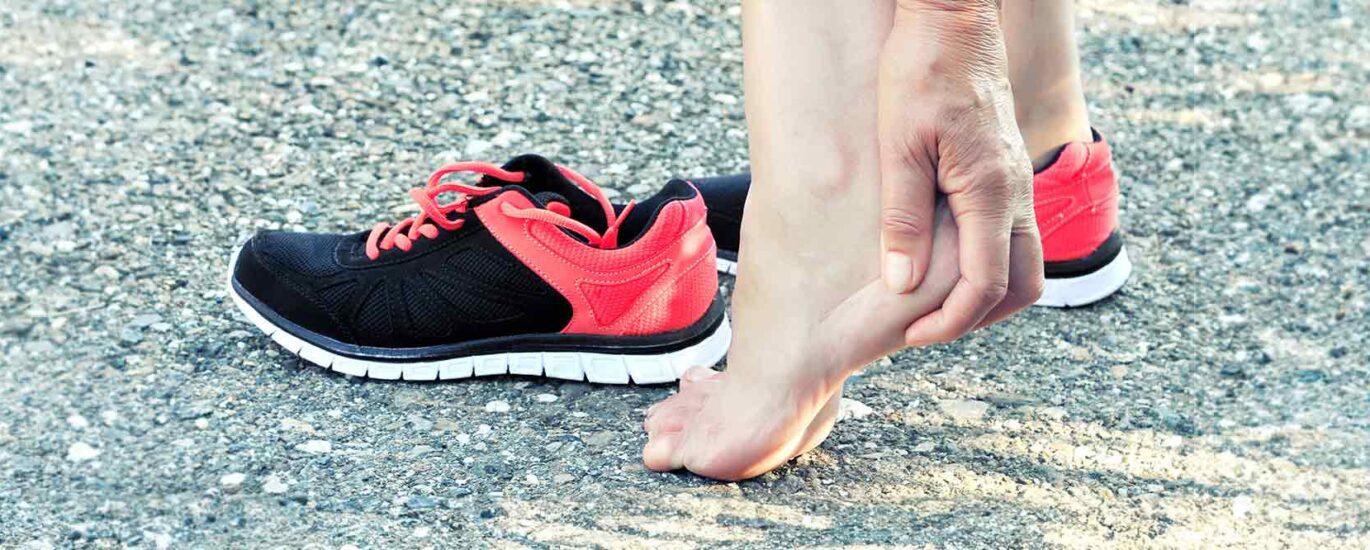


Your Complete Circle Of Style, Wellness, And Inspiration.

Foot pain can be caused by a number of things that you’ve heard of – like bone spurs or bunions. But you may have only recently heard of Haglund’s deformity, a small, bony ridge or bump that can form on the back of the heel near your Achilles tendon, causing discomfort and pain.
Haglund’s deformity isn’t as scary as it sounds. In most cases, it can be treated with well-fitting shoes or physical therapy. But in some cases, your doctor may recommend surgery to fix the problem.
Here, we’ll go over the causes of Haglund’s deformity and why it can happen, as well as treatment options so you can address your foot pain and get back to walking normally.
Haglund’s deformity is very common. But since it doesn’t always cause severe symptoms, many people don’t see a doctor or get an official diagnosis.
The exact cause of Haglund’s deformity isn’t known. It’s possible that genetics play a factor in that your natural foot structure makes you more susceptible to developing Haglund’s deformity. Genetic factors that may increase the chances of developing it include:
Outside factors can irritate your feet as well. Haglund’s deformity is commonly referred to as “pump bump,” meaning the rigid backs of pump-style shoes, like high heels, can irritate the heels, causing foot issues.
It’s not just women’s shoes that can cause a problem, either – it can be any shoes with rigid backs, like men’s dress shoes, roller skates or ice skates. Overusing your heels with activities that require repetitive motion, like running, jogging or climbing stairs, can also lead to Haglund’s deformity.
Haglund’s deformity almost always develops on both feet, although it can just affect one. The most noticeable symptom of Haglund’s deformity is a bump on your heel that you can see and feel through your skin.
The bump doesn’t necessarily mean you’ll develop other symptoms, but it makes it more likely, as it could rub against your shoes and cause further problems, such as:
Haglund’s deformity and heel spurs are both bony growths, can be caused by similar things and are treated similarly. And they can both form on the back of the heel. But heel spurs can also form in a different spot – on the bottom of the foot where the heel bone connects to a ligament between your heels and the balls of your feet called the plantar fascia.
Heel spurs are common, and they’re often mistaken for other foot conditions, like Haglund’s deformity. More often, they are caused by a chronic tight plantar fascia or other foot conditions that cause inflammation, like plantar fasciitis, Achilles tendonitis and osteoarthritis.
Haglund’s deformity is one part of what doctors call Haglund’s syndrome. In addition to a bump on the heel, many people experience Achilles tendonitis, when overuse causes the Achilles to swell and become painful, and bursitis, where inflamed bursae (fluid-filled sacs) can cause pain in the heel. If you have one of these conditions, it becomes more likely that you will develop others.
Your doctor will likely suggest treatments to relieve your symptoms before recommending surgery. Treatment of Haglund’s deformity usually starts with small lifestyle changes that take the pressure off of your heel and help with your foot pain. Nonsurgical treatments include:
Most cases of Haglund’s deformity respond well to nonsurgical treatments. But in the rare instance your symptoms don’t respond to at-home treatment, your doctor may recommend surgery to remove the bump.
For a diagnosis of Haglund’s deformity, your doctor will likely refer you to a podiatrist, which is a foot specialist that can help you with a diagnosis and treatment plan. They’ll ask about your medical history, your occupation, physical activity, type of shoes you wear and your family history of foot problems.
Your doctor will then perform a physical exam and possibly do a gait analysis, where they’ll watch the way you walk to determine if it could be causing problems. And because Haglund’s deformity can look like other heel conditions, such as plantar fasciitis, your doctor may also order an X-ray or MRI to rule out other conditions.
Haglund’s deformity can cause significant foot pain, but with proper treatment, your pain should lessen and even go away over time. HealthPartners board-certified podiatrists treat foot conditions that range from common to complex. They can help by answering your questions, listening to your concerns and providing you with a treatment plan that’s personalized to your individual condition. Don’t ignore your foot pain – treat it before it can become worse.